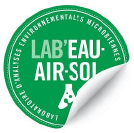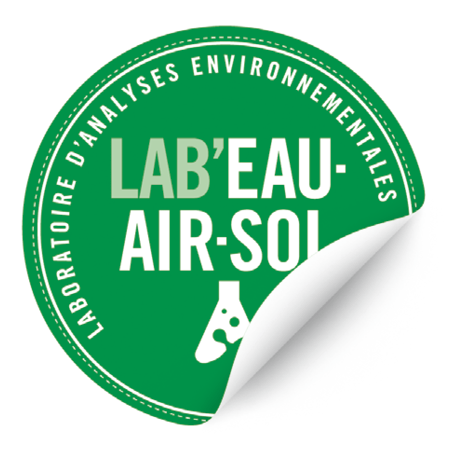Legionella detection: What’s the difference between drinking water and process water?
Legionellosis, a serious lung infection caused by bacteria of the Legionella genus, represents a major public health issue. The infection is contracted through exposure to the bacteria, usually via airborne aerosols. Water-cooled cooling towers (WCTs), often used in commercial and industrial buildings, are particularly conducive to the proliferation of this bacterium, producing large quantities of aerosols. In Quebec, regulations on the prevention and control of Legionnaires’ disease were tightened for these types of systems following the 2012 epidemic in Quebec City’s lower town. Testing for Legionella in these systems is therefore crucial to preventing the associated health risks. These analyses make it possible to monitor the presence of the bacteria, and to ensure that corrective measures are taken in the event of contamination.Although only ITRE systems are listed and tested in accordance with regulations in Quebec, they are not the only systems that may be affected by this problem. Legionella can potentially reproduce in any water system kept between 20 and 45°C. The presence of stagnant water, biofilm, rust, limescale, nutrients and other microorganisms can also promote the growth of this bacterium. These conditions are, of course, potentially present in ITREs, but can also be found in many other types of water-using, aerosol-producing installations. Since these two types of system represent different risks and pose their own maintenance and prevention challenges, it is useful to group them under separate categories. For example, the term “process water” will be used for samples from ITREs used for air conditioning, injection mold cooling, industrial chemical production, etc.For other water-using systems that may produce aerosols, the term “drinking water” will be used instead. This refers to water in systems that deliver water to showers, faucets, fountains, spas, misters and the like. Safety shower sign Moreover, in August 2016 the Institut national de santé publique du Québec (INSPQ) produced, at the request of the Director of Public Health of the Agence de la santé et des services sociaux (ASSS) de la Mauricie-et-du Centre-du-Québec, a scientific opinion on the management of drinking water in hospitals. The issue here is that the hospital population is particularly at risk of developing infections caused by Legionella pneumophila. On the subject of drinking water analyses, the document states:The French Food, Environmental and Occupational Health Safety Agency (ANSES) considers that the health value below which the risk of legionellosis is negligible or acceptable is between 10,000 -100,000 CFU/L of L. pneumophila (ANSES 2011) in a drinking water network. However, the threshold set by French regulations is 1000 CFU/L, in order to ensure a sufficient safety margin. Quebec laboratories generally use this 1000 CFU/L action threshold to guide the interpretation of drinking water test results. It should be noted that this threshold is 10 times lower than that currently used for ITREs, and requires laboratories to carry out additional preparation steps in order to reach this threshold. It is therefore important when submitting a request for analysis to an accredited laboratory to specify for which type of sample, process water or drinking water, these analyses are required! Lab’EAU-AIR-SOL has a rigorous team of qualified microbiologists and chemists for your analysis needs. We are also authorized to produce maintenance programs for ITREs and drinking water systems for the prevention of Legionella.
What is Legionella?
The Legionella (or Legionella) is a pathogenic bacterium that can cause lung disease in humans, including Legionnaires’ disease (also known as Legionellosis) and Pontiac fever. Legionella is notably found in water, and infection can be transmitted when an individual breathes in droplets of water contaminated by this bacterium. As with many types of respiratory infection, the symptoms associated with legionellosis are not very characteristic. The main symptoms are cough, fever, muscle aches, headaches, excessive shortness of breath and lethargy. It should be noted that the risk of developing Legionnaires’ disease increases with age, and with medical or health conditions that weaken the immune system. Smoking and excessive alcohol consumption also increase the risk of infection. Men also seem particularly susceptible to infection, accounting for 60-70% of reported cases! Laboratory analysis and culture of legionella samples. Historically, the bacterium was discovered in an outbreak following the 1976 American Legion Convention in Philadelphia. That’s where it gets its name, Legionella. In studying this episode and other subsequent epidemics, research into the sources of the disease revealed that most significant exposure to these pathogenic bacteria results from their proliferation in aerosol-producing installations where stagnant water can be found, such as cooling towers, air-conditioning systems, spas or equipment linked to drinking water distribution systems (safety showers, hot water tanks, misters, etc.). In Quebec, legionellosis has been on the Ministry of Health and Social Services’ list of notifiable diseases (MADO) since 1987. Then in 2012, following the Legionella outbreak that claimed 13 lives in Quebec City, the Régie du Bâtiment established regulations on the management of water-cooled cooling towers. Indeed, it was this type of installation that was at the origin of the epidemic, and seems to represent the highest risk of exposure leading to infection. This increased risk is due, among other things, to the fact that this equipment forms a lot of aerosols, which can carry the bacteria several hundred meters! Currently, Legionella pneumophila is the only species of the Legionella genus covered by these regulations (Decree 454-2015). Although several other Legionella species exist, some of which such as Legionella longbeachae and L. bozemanii can be pathogenic, these infections are much rarer and are much less associated with large-scale outbreaks. If your building has water installations such as spas, water heaters, safety showers, misters or aerosol-generating air conditioning systems, note that it may be appropriate to add Legionella analysis to your risk identification and management program. If you have a water-cooled cooling tower installation (WCTI), you will be subject to the regulations governing the transmission of information to the Régie du bâtiment du Québec(RBQ)2. Legionella bacilli, microscope Lab’EAU-AIR-SOL has a rigorous team of qualified microbiologists and chemists for your analysis needs. We are also authorized to produce ITRE maintenance programs for Legionella prevention. We also offer consulting services for risk analysis of other types of systems that may be the source of Legionella exposure. Contact us for more information at labeauairsol.ca/service-request/
Everything you need to know about the annual cooling tower information return (ITRE)
If you own a cooling tower (ITRE), don’t forget that you have certain obligations under Section VII: Provisions for the maintenance of a water-cooled cooling tower installation of the Building chapter of the Safety Code (CBCS). Since January 2018, the Régie du bâtiment du Québec (RBQ), has been mailing you an information transmission form that you must return before the 1st st March. Here’s some relevant information to have on hand when completing your tax return. If one of our professionals has designed and signed off on your cooling tower maintenance program, you’ll need the following information: If our accredited laboratory carries out your microbiological analyses, you will need the following information: If you’re not a customer with us, you’ll need … Request a service IMPORTANT! To enable us to transmit your data efficiently to the Régie de Bâtiment du Québec, please make sure that the address of the facility that appears on your declaration is exactly the same as the one you indicate on your analysis requests. When addresses do not match, the RBQ automated system does not record your data when it is sent by the laboratory, and we do not receive any error messages. MAINTENANCE PROGRAM UPDATE So the reporting period for your cooling systems is a good time to review certain critical points of regulatory compliance… Do you have a maintenance program for your ITRE installations? A maintenance program signed by a member of a professional association must be available on the premises. Does your program include Legionella pneumophila test results for the last 2 years? Have any of the following situations occurred since you last updated your program? If you don’t meet any of the above criteria, your program needs to be revised! Don’t worry, we can help!
Asbestos in Quebec’s road network
Since the tabling of the 2022-2025 action plan on asbestos and asbestos residues in Quebec, particular attention has been paid to the use of asbestos fibers in asphalt mixtures using recycled bitumen aggregates (RBA).
 MEMBRE DU GROUPE EXPERTBÂTIMENT
MEMBRE DU GROUPE EXPERTBÂTIMENT